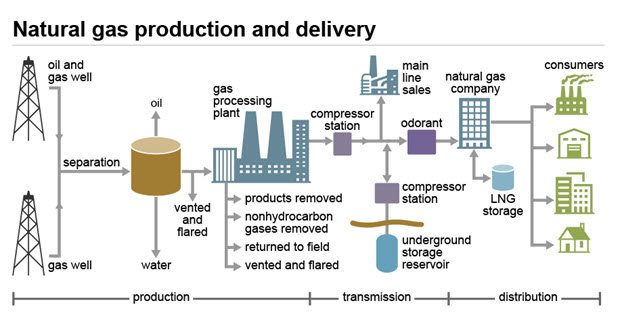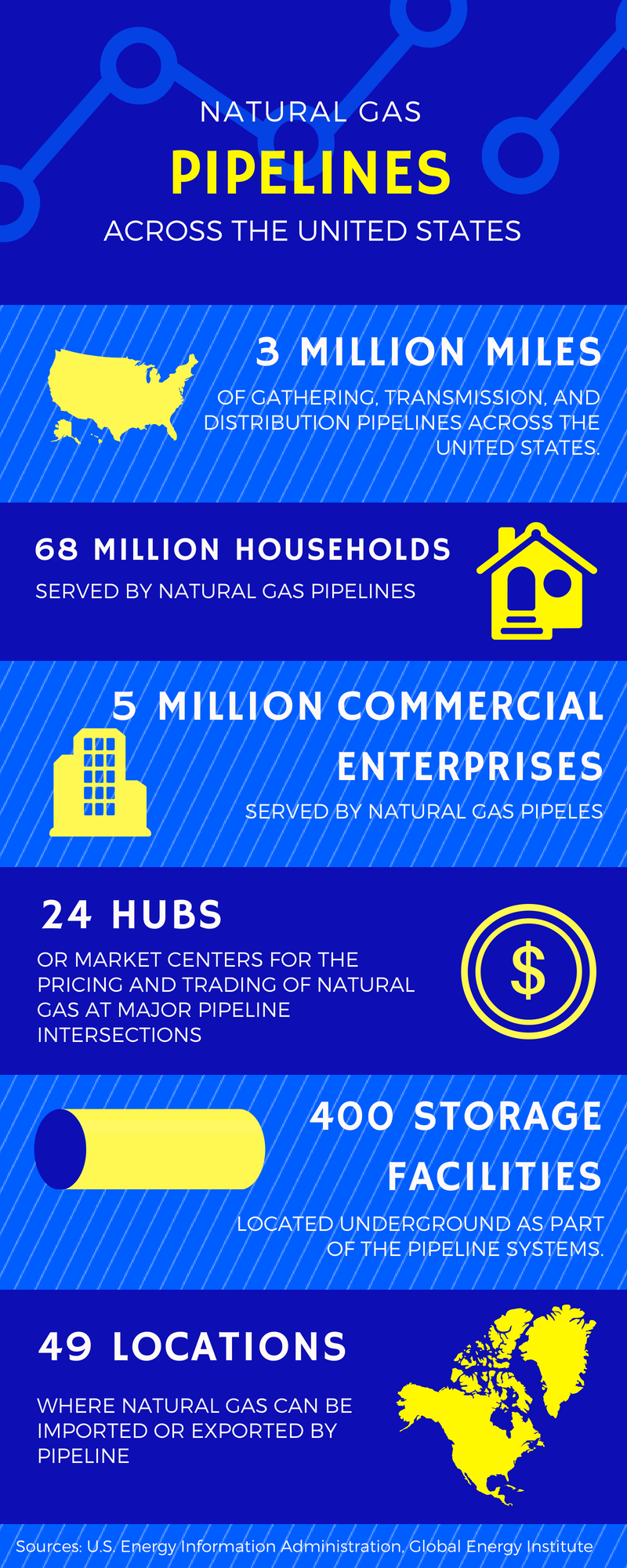America is increasingly looking to natural gas to power its economy while reducing carbon emissions. Whether gas is powering our electric grid or fueling our businesses, homes, cars, and trucks, an expanding network of natural gas pipelines (“infrastructure”) is essential.
In 2018, natural gas fueled 35% of total U.S. electricity generation, up from 24% in 2010.
About half of American homes use natural gas for heating and cooking. The residential sector accounted for about 16% of U.S. natural gas consumption in 2017.
But how does natural gas get from the wellhead, where companies like Cabot extract it, to the power plants and customers who use it to fuel their lives? The answer is America’s natural gas pipeline network, which contains around three million miles of pipeline, reaching 73 million customers across the country.
The Process
Delivering natural gas from wells to consumers requires a lot of equipment and a lot of pipe, which includes several physical transfers. of the resource.
Natural gas delivery infrastructure can be grouped into three categories:
- Processing
- Transportation
- Storage

After natural gas is extracted from the ground, it flows through a gathering system. This system is made of small-diameter pipes that lead the gas to larhttps://youtu.be/0VkKEH8t8vMger pipelines or a processing plant. Processing plants purify the gas by removing water or un wanted ghttps://youtu.be/0VkKEH8t8vMases.
wanted ghttps://youtu.be/0VkKEH8t8vMases.
Then, natural gas travels long distances through transmission pipeline systems, like the Atlantic Sunrise Pipeline that recently became operational, to areas with high natural gas demand.
The transmission system includes interstate and intrastate pipelines. Interstate pipelines are just like interstate highways that cross state lines, while intrastate pipelines transport natural gas within one state.
The gas is under high pressure in these large pipes, from 200 to 1500 pounds per square inch (psi). There are compressor stations every 50 to 60 miles to ensure the gas keeps flowing. Metering stations are added to measure the gas. Natural gas is priced and traded at one of 24 hubs or market centers across the U.S., which connect pipelines at major intersections.
A city gate is a point where natural gas is transferred from high pressure, long distance pipelines to a local distribution company, or LDC. At city gate stations, the pressure is reduced to as low as 3 psi for customer use. Local utilities also add the odorant Mercaptan to make the naturally odorless natural gas smell like rotten eggs. The distinctive smell makes natural gas leaks easy to detect.
After the gate station, natural gas is moved by small, low-pressure pipelines called distribution lines. While the lines vary in pressure and diameter, they are typically smaller and have a lower pressure the closer they get to the customer. Utilities make sure the gas is flowing with the right volume and pressure. By the time natural gas reaches residential homes, pipes are often less than an inch in diameter.
In terms of customer pricing, end users typically pay a commodity charge and a delivery charge. The commodity charge is the cost of the gas at the city gate (regulated utilities are typically not permitted to mark-up this cost). The delivery charge is the portion of the bill charged by the local distribution company.
Pipelines are extremely safe and across the U.S. serve 68 million households and five million commercial enterprises. Pipelines make the use of natural gas possible and literally fuel our economy.
If you haven’t already, make sure to check out:
